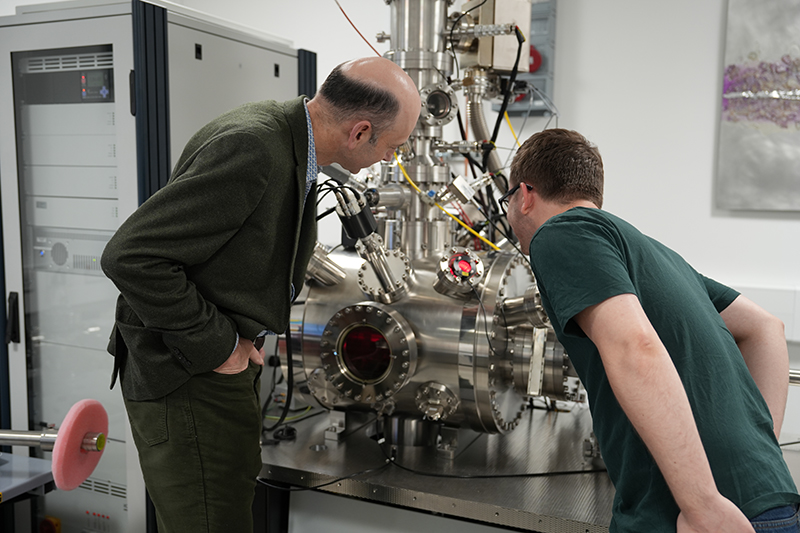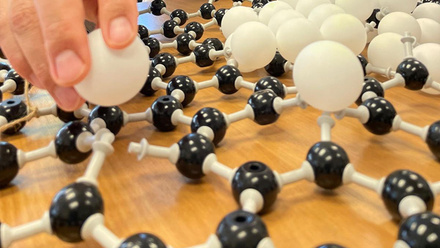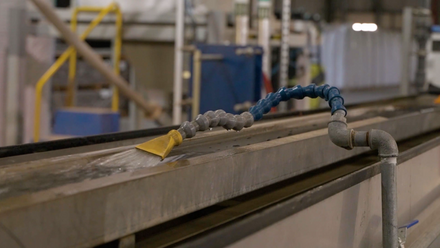Quantum defects in diamond precisely fabricated
These tiny imperfections in the crystal lattice can store and transmit information using quantum physics.

Professor Richard Curry and Dr Mason Adshead with the Platform for Nanoscale Advanced Materials Engineering tool used to place single atoms of tin into diamond
© University of Manchester
UK scientists at the Universities of Oxford, Cambridge and Manchester claim to have demonstrated for the first time that it is possible to create and monitor individual Group-IV quantum defects in diamond.
Group-IV centres have long been prized for their high degree of symmetry, which gives them stable optical and spin properties, making them ideal for quantum networking applications. It is widely thought that tin-vacancy centres have the best combination of these properties, but until now, reliably placing and activating individual defects was a major challenge
By carefully placing single tin atoms into synthetic diamond crystals, and then using an ultrafast laser to activate them, the team reports pinpoint control over where and how these quantum features appear.
This level of precision is vital for making practical, large-scale quantum networks capable of ultra-secure communication, and distributed quantum computing to tackle currently unsolvable problems.
Specifically, the defects in the diamond act as spin-photon interfaces, which means they can connect quantum bits of information (stored in the spin of an electron) with particles of light. The tin-vacancy defects belong to a family known as Group-IV colour centres - a class of defects in diamond created by atoms such as silicon, germanium, or tin.
.The researchers used a focused ion beam platform, essentially a tool that acts like an atomic-scale spray can, directing individual tin ions into exact positions within the diamond. This allowed them to implant the tin atoms with nanometre accuracy, far finer than the width of a human hair.
To convert the implanted tin atoms to tin-vacancy colour centres, the team then used ultrafast laser pulses in a process called laser annealing.
This process gently excites tiny regions of the diamond without damaging it.
What made this approach unique was the addition of real-time spectral feedback, monitoring the light coming from the defects during the laser process.
This allowed the scientists to see in real time when a quantum defect became active and adjust the laser accordingly, offering an unprecedented level of control over the creation of these delicate quantum systems.




